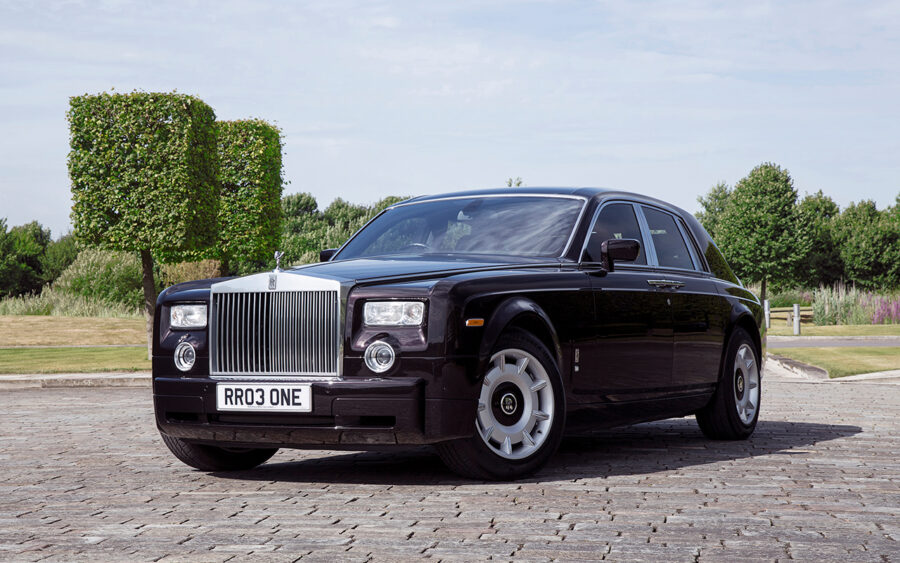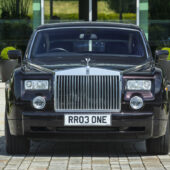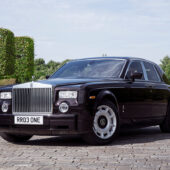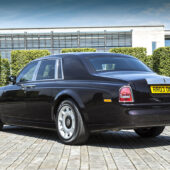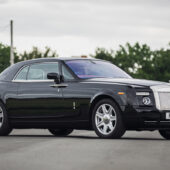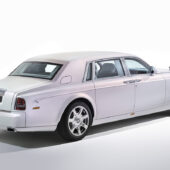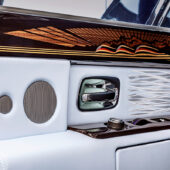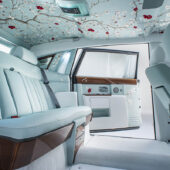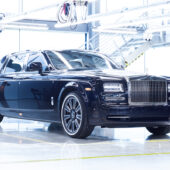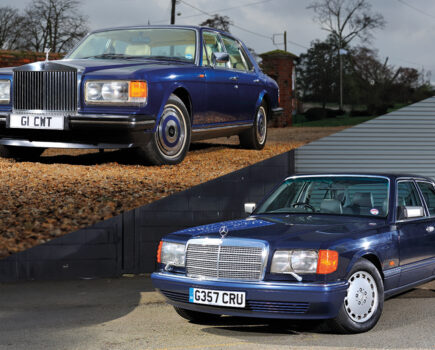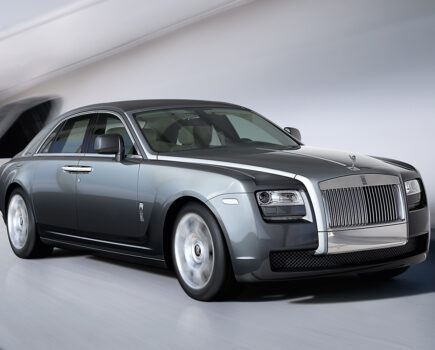It was all change at Rolls-Royce under BMW ownership with the seventh revival of the Phantom nameplate, complete with V12 power and aluminum spaceframe
Words: Jon Burgess Images: Rolls-Royce
After 18 years in charge of Rolls-Royce Motors, parent firm Vickers decided to sell the firm off to the highest bidder. As history records, it was Volkswagen who took home the family silver on April 31, 1998 for £340 million – Bentley and Rolls-Royce in its entirety – but alas, there was a problem. Volkswagen Group outbid BMW eight days later, putting down £430 million to take both firms off Vickers’ hands. Shareholders delayed approving either offer; an acrimonious row broke out, with VW eventually securing both firms for £469 million.
It wasn’t quite the all-encompassing deal it seemed, however. The rights to call Rolls-Royce cars as such, and use Rolls-Royce Motors’ name, badge, and historic grille (complete with retractable Spirit of Ecstasy), were not included in the sale.
Furthermore, the then-new Rolls-Royce Silver Seraph and Bentley Arnage used BMW’s 5.4-litre M73 V12 (and M64 V8) in both naturally aspirated and turbocharged form, respectively; BMW was not prepared to supply a direct rival with parts (which also included electronics and other systems) unless a resolution could be reached to its satisfaction. Some called it a bitter coup, others called it due deference.
Negotiations between the three parties ensued – and BMW secured a licence to use the Rolls-Royce badge, name and seminal grille from Rolls-Royce plc (Rolls-Royce Holdings), the firm in which the intellectual rights were interred when the car and aero engine business were split up in 1973. Rolls-Royce plc had worked closely with BMW since 1990, when both firms merged the interests of a third firm, Kloekner-Humboldt-Deutz AG, into a joint company. Owing to cordial relations, the outcome was inevitable.
£40 million is said to have changed hands; a five-year handover period for engines, gearboxes and electronics was agreed, leaving VW with what was left – Bentley Motors, its Crewe factory, and the historic L-Series V8. Before the official switchover date – January 1, 2003 – BMW had invested heavily in ‘Project Rolls-Royce’, which had begun on 28 July 1998, the day the licence agreement was signed.
Rolls-Royce Motor Cars Limited was born: while a UK styling team and German project hub would build a new car (in a new factory), Royce’s next model would owe nothing to the models (and company) that went before.

This was the revived model’s ‘Starting Period’. Access to BMW investment meant that a truly new model could be birthed: so it was with Phantom VII, the first Rolls-Royce in the history of the nameplate with a V12. It was not until Phantom VIII took over in 2017 that the Phantom VII was referred to as such by Rolls-Royce; writing in 2023, we used the retrospective title, but during production it was known only as Phantom Series I (2003-2009) and Series II (2009-2017).
As work began on the seventh Phantom, a truce was in place at Pyms Lane. VW made interim improvements to the Rolls-Royce Silver Seraph and Bentley Arnage, with the latter car rebadged as Arnage Green Label until BMW V8 engine supply obligations were fulfilled. That later Red Label Arnage models revived the not-quite-retired-but-not-intended-for-the-Arnage 6.75-litre L-Series V8 was history in itself. The L-Series was effectively VW’s, and would not be appearing in any future Rolls-Royce products; nor would Bentley be following Rolls-Royce to pastures new.
BMW formed a tiny UK design and styling studio in London to nail the look of its new Phantom; based on Bayswater Road near Hyde Park, previous Rolls-Royces drove past at frequent intervals. A top secret modelling studio was also established in Holborn, nicknamed ‘The Bookshop’; there, the new Phantom would take shape.
Chief engineer Tim Leverton co-ordinated an engineering team in Munich that reported to director of department Helmut Riedl, who would later preside over the Silver Seraph’s eventual replacement, Ghost.
Leverton’s group eventually settled on dimensions close to those of the outgoing Phantom VI, the coach built, separate-chassied behemoth of which 374 were built between 1968 and 1990. The new Phantom needed that car’s height and presence, but also had to observe significant Rolls-Royces of previous years. The styling team – hand-picked by BMW’s head of design, Chris Bangle – were picked after combing through their portfolios.
Speaking to Automotive News Europe in 2003, Leverton said that Phantom VII needed to be “well forward at the front, with large diameter wheels, a large, large bonnet, instrument panel under the cowl, the waistline dropping, the sill line rising as you go back from [the] radiator.”
Ian Cameron (best known for his work with the E46 3 Series) headed up the styling team, which also paid homage to the Silver Cloud I and Silver Shadow, the two bookends of Royce’s technological achievements to date. The former was the apex of traditional construction, whereas the Shadow ushered in a new era – that of the L-Series, monocoque construction, and self-levelling suspension with high-power brakes.
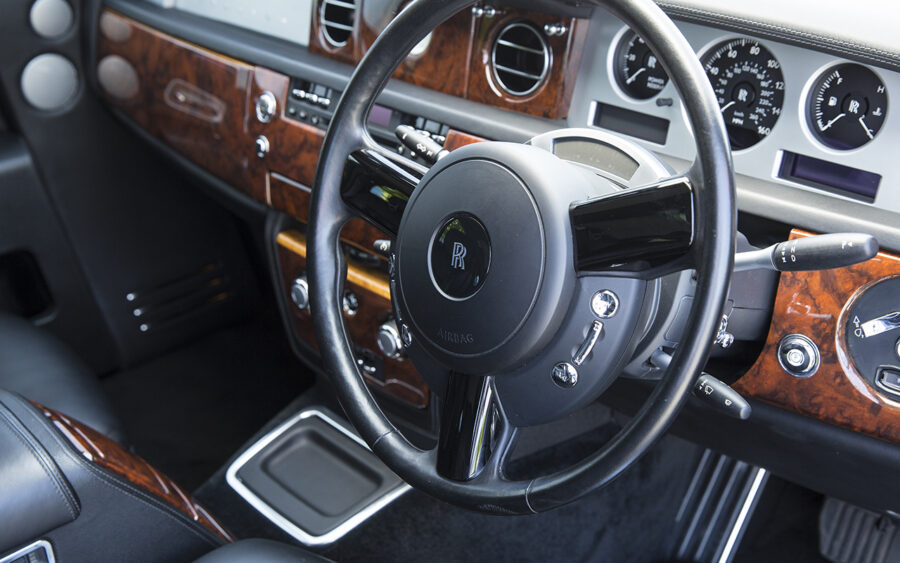
That Rolls-Royce had barely moved on from the Shadow was owing mostly to a chronic shortage of funding; its ‘SZ’ range, which began with the Silver Spirit, was effectively a thorough update of the Shadow, but nothing more. Silver Seraph had brought a new bodyshell and more modern suspension, and a wish by Vickers to finally put the L-Series V8 out to pasture.
BMW could bring Rolls-Royce into the 21st century. By 1999, BMW Designworks’s Marek Djordjevic had won an internal competition to shape the next Phantom; paying deference in its rear three quarters to Phantoms IV, V and VI, it also revived the use of suicide (‘coach’) doors last seen on the 1968-1990 Phantom VI.
Getting these doors through EU legislation was long and tiring, but Rolls-Royce prevailed by 2001; they had been made ineligible owing to their tendency to catch the wind and fly open. Interlocks eventually persuaded Brussels; that the rear doors would open only when the fronts were ajar assured them, while a button to pull them closed when the aft passengers were seated did much to convince.
In the meantime, an extruded aluminium spaceframe had been designed, one which carried the weight of the car and its panels. Charles Coldham’s interior hid almost all of the electronic systems away – including that of a BMW-derived iDrive system – behind wooden drawers and cubby holes. A power reserve dial dispensed with the need for a rev counter, disclosing the Phantom’s performance not to the driver but on data sheets for the first time.
BMW’s N73 V12 was enlarged from 6.0-litres to 6.75-litres for its role in the Phantom, where it produced 453bhp and 531lb ft of torque – more than adequate for the car’s 2.7 tonne weight. It drove through a six-speed automatic gearbox with no over-ride facility other than ‘low’, which held on to ratios for longer and altered the speed of the changes. The driver – whomever they may be, owner or chauffeur – selected drive via a column shift and had 75 per cent of maximum torque available from 3500rpm.
They gripped a thick, chunky steering wheel suggested by intensive customer research; rear passengers benefitted most from the air suspension and choice of bench or individual seating, having a low sill to step over to allow access into the passenger compartment.
A year later, Tony Gott – a Rolls-Royce long termer, having begun his working life as a senior engineer in Crewe in 1984, was made director of Rolls-Royce Motor Cars’ business unit, although his tenure would not last.
Goodwood in Sussex was chosen as the new factory home of Rolls-Royce, after BMW sifted through thousands of applications from towns the length and breadth of the country. Aside from its proximity to the famous Circuit, the selected site was fewer than ten miles from West Wittering, the village where company co-founder, Sir Henry Royce, lived from 1917 until his death in 1933. A massive facility with few robots, almost all of the assembly was (and still is) completed by hand.
2002 also saw the last Silver Seraphs built with BMW engines in Crewe – though the only new Rolls-Royce model built under VW control was an example of the turbocharged Corniche V, an Azure remodelled to take the nose and tail of the Silver Seraph.
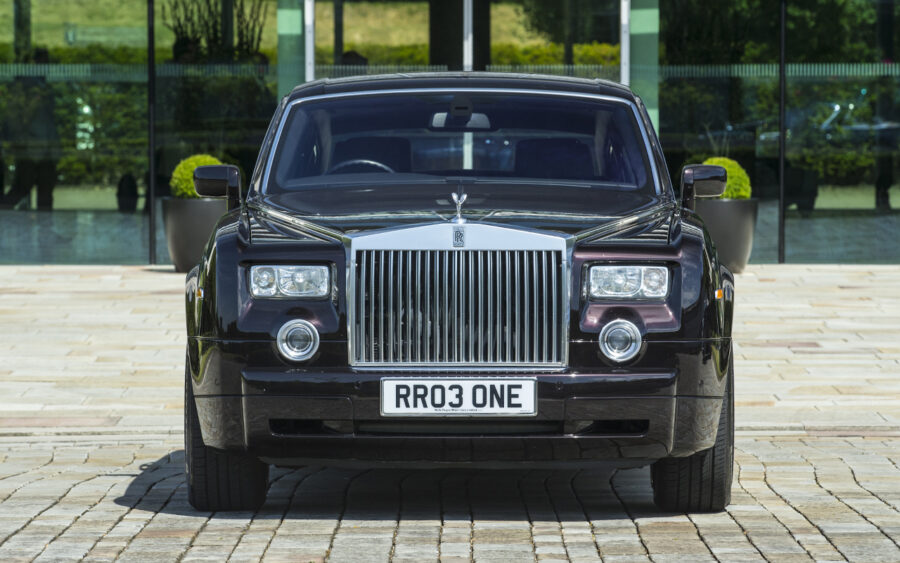
January 1, 2003, 00.01: the day VW’s claim to Rolls-Royce was relinquished and the first owner took delivery of ‘RR01’, the first Phantom VII produced at Goodwood. Three months later, it would land in Australia for a 4500-mile tour, eventually reaching the Sydney Harbour Bridge in New South Wales.
Staff and production levels gradually rose at Goodwood, and within a year, buoyed by positive reviews that made much of Phantom VII’s Teflon tipped, door-mounted umbrellas and separate bezelled hubcaps (keeping the ‘RR’ logo upright at all times) a new statement of intent appeared at Geneva: the 100EX, previewing the Drophead Coupe that would appear in 2007.
One thing that stayed on 100EX – aside from its brushed stainless steel bonnet – was its 9.0-litre V16 engine. Five units are said to have been built as an engineering exercise, but BMW insist to this day that a V16 was never on the cards for Phantom, owing to its size, capacity, and lack of overall refinement compared to the 6.75-litre V12.
We would, however, see the V16 one more time in 2011’s Johnny English Reborn; Rolls-Royce was persuaded by lead, Rowan Atkinson, to slip one of the engines under the bonnet of a then-in-production Phantom Drophead Coupe.
But that was in the future. 2005 saw a 25cm (10-inch) longer Phantom Extended Wheelbase (EWB) launched; this was joined by Phantom Armoured two years later. 2006 commemorated the 1000th Phantom built in East Sussex, a far cry from the facility’s beginnings in 2003 when it completed one car a day. That year, Geneva also got a taste of 2008’s Phantom Coupe, when showgoers glimpsed the red-badged 101EX concept car; like 100EX, it too used an experimental 9.0-litre V16 engine.
The end of the Noughties was near, and a discreet facelift for 2009 added more colours to the standard paint line-up, altered the bumpers, and made small interior changes including a glovebox update. The integral Michelin Pax run-flat wheel/tyre system was also dropped: a special rim with a solid plastic inner rim allowing up to 50 miles of travel on a punctured tyre, its complexity and cost led to conventional replacements.
That Phantom embodied Rolls-Royce’s revival was one thing; in 2011, it also showed its future in the form of 102EX (Phantom EE), a battery powered test bed built to gauge opinion among current Royce customers. Powered by lithium ion cells, and two rear mounted motors (one per wheel), its 0-60 performance matched that of the V12 Phantom, albeit with a 99mph limited top speed. In the last quarter of 2023, Rolls-Royce will release its first ever pure electric model, Sceptre, informed by research gathered from the 102EX project.
Phantom Series II was the only major update to Phantom in its 14 years of production, and arrived in 2012 alongside the equivalent Extended Wheelbase, Coupe and Drophead Coupe. New, larger headlights updated the previous split main and driving light units, and an eight-speed automatic supplanted the original ZF six-speed. Charles Coldham’s interior and décor was simplified further to update its appearance; for the first time in Phantom VII history, an optional Drivers’ Pack, with extra spaceframe shell bracing, an even thicker steering wheel and reworked brakes, was offered.
By the time Phantom VII arrived in 2017, Phantom VII had transformed Rolls-Royce. It had moved into a new era, joined in time by Ghost, Wraith and Dawn models; in 2023, with 20 years observed, 2500 people work at Goodwood, with more than 50 nationalities represented.
While VW may have rued BMW’s persistence, Royce Motor Cars has prospered to hitherto unknown heights of sales, and technological prowess. Long may it continue.
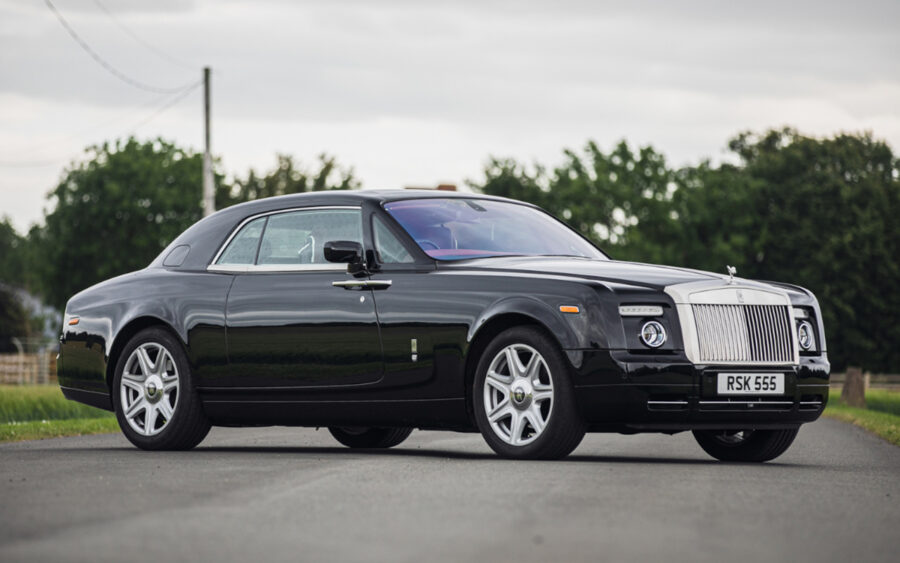
Rolls-Royce Phantom VII timeline
1997-1998
BMW AG subsidiary, Rolls Royce Motor Cars, formed after agreement between Vickers, VW, and BMW.
Plans announced to build a new Rolls-Royce factory in the UK; thousands of towns submit applications.
1999
Winning design, by Marek Djordjevic of BMW Designworks, selected for further development.
2002
Last Silver Seraph sold; final Crewe Rolls-Royce, a Corniche, is built at Pyms Lane. Rights to R-R name, logo, grille and Spirit of Ecstasy revert to BMW, leaving VW with Bentley and the former R-R/Bentley Crewe factory.
2003
January 1 sees first Phantom, ‘RR01’ completed and handed over to its new owner. Rolls-Royce Motor Cars Limited (Goodwood), West Sussex officially opens with 200 staff.
Phantom VII launched. All-new aluminium spaceframe chassis, rear coach doors, run flat Michelin Pax wheels/tyres, 6.75-litre, 453bhp BMW-derived V12, and dimensions within those of the Phantom VI (1968-1990).
2004
Century of Rolls-Royce commemorated by 35 special Phantom ‘Centenary’ models.
21-inch alloys with conventional Goodyear tyres made optional.
100EX concept car debuts at Geneva – effectively previewing the Drophead Coupe, but its engine – a 9.0-litre V16 unit – stays in the 100EX.
Director, Tony Gott, leaves Rolls-Royce, said to be by mutual consent; Karl-Heinz Kalbfell replaces him, only to resign the same year.
2005
Extended Wheelbase (EWB) Phantom launched.
25-unit 80th Anniversary Edition released to commemorate 80 years of the Phantom nameplate.
Ian Robertson replaces interim manager Stefan Krause as chairman and chief executive.
2006
1000th Phantom VII leaves Goodwood.
Phantom Coupe sneak preview in the form of the 101EX concept, shown at Geneva.
2007
Phantom Drophead Coupe launched at the North American International Auto Show.
Phantom Armoured released.
Phantom Silver run of 25 cars to celebrate 100 years of the Silver Ghost nameplate on sale.

2008
Geneva sees the Phantom Coupe made official.
One-off Phantom Hyperion by Pininfarina, based on the Phantom Coupe, revealed at Pebble Beach Concours d’Elegance, pushing the driving position back to create a cabriolet.
2009
Facelift for Phantom and Phantom Extended Wheelbase; Michelin run-flat Pax dropped and interior/exterior changes to mimic styling cues of Phantom Coupe and Drophead Coupe.
Ghost finally succeeds Silver Seraph, joins Phantom on the line at Goodwood.
2010
Torsten Müller-Ötvös appointed Rolls-Royce Motor Cars’ CEO.
A Phantom appears in Iron Man 2.
2011
Battery-powered 102EX (Phantom Experimental Electric, or Phantom EE) arrives. Used as testbed for engineers, celebrities and current owners for Rolls-Royce to gauge opinion; data collected used in the development and eventual release of Spectre (2023).
V16-engined Drophead Coupe, ‘Royce’, built with a prototype V16 engine, appears in Johnny English Reborn.
100-run Phantom Spirit of Ecstasy Centenary Collection launched, complete with special desk ornament.
2012
Phantom Series II debuts. A thorough facelift inside and out, as well as a new, simplified dashboard, infotainment systems from the Ghost and 21-inch wheels on standard tubeless tyres.
Phantom Series II EWB, Coupe and Series II Drophead Coupes launched in Macau and Paris respectively.
2013
Home of Rolls-Royce Collection Phantom unveiled, built by Rolls-Royce Bespoke to observe 10 years of Rolls-Royce Motor Cars Limited at Goodwood.
2017
Phantom Series II production ends on 31 January; the very last car is an Extended Wheelbase.
Limited run of 50 Zenith edition cars sees the Phantom, Coupe and Drophead Coupe out, with a glass champagne shelf deployed from a split tailgate.
Succeeded by Phantom VIII with twin-turbocharged 6.75-litre V12 and new aluminium spaceframe (known as ‘Architecture of Luxury’).
One-off Drophead Coupe-based Sweptail, built over a four-year period, is revealed.

